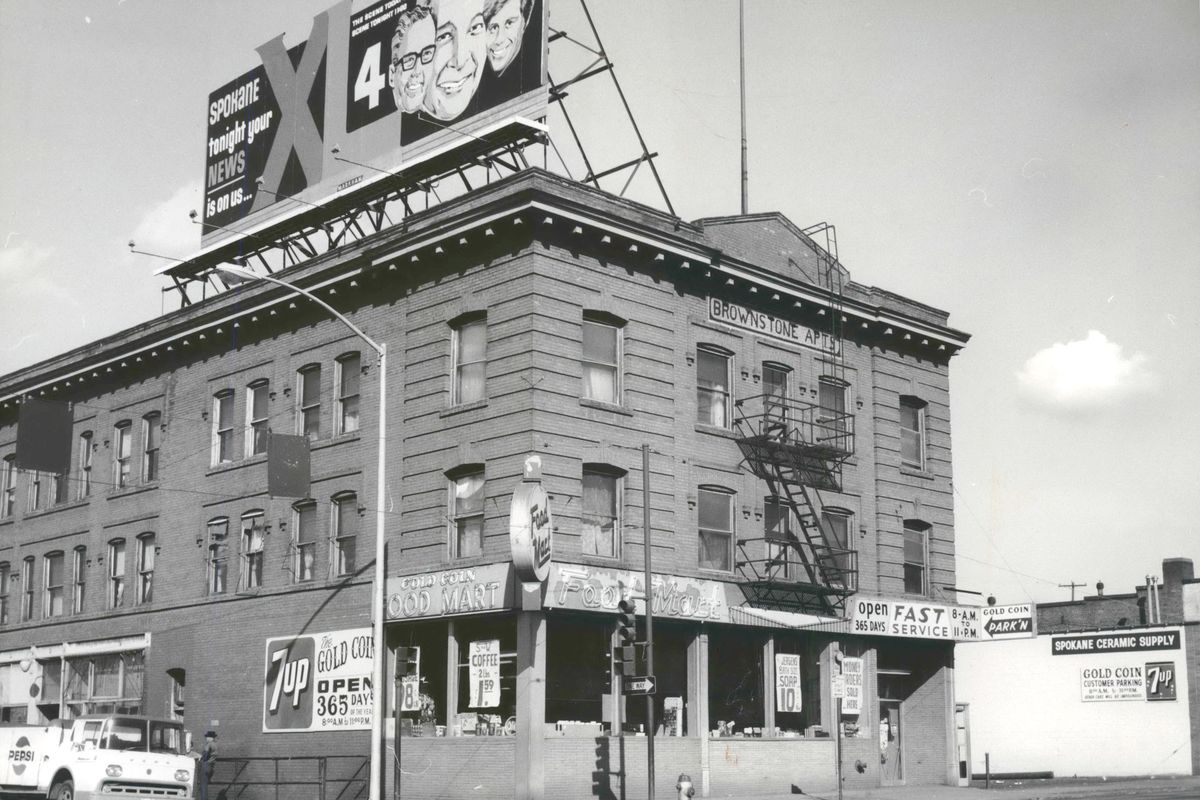Then and Now: The Brownstone Building

Built in 1910, the Brownstone Apartments was an elegant, three-story building. At that time, Spokane was booming and workers needed housing. Third Avenue, still on the outskirts of downtown, was lined with apartments and single-family homes.
There was retail space on the first floor. In 1936, the Gold Coin Food Mart opened on the Third Avenue side. It was a place to get food basics and a beer.
Harrison William “Bill” Semro Jr. was the store owner in the 1950s. He was president of the Washington State Food Dealers Association, which represented independent grocery stores, in 1958. In 1973, Semro bought the building as well. His son, also named Bill, worked in the business.
Over the years, families left the downtown for the suburbs, leaving single men, the poor and the homeless behind. Gold Coin sold fortified wine and beers, but the poorest alcoholics would sometimes buy rubbing alcohol, nicknamed “rub-a-dub,” for a cheap high. Police traced the rub-a-dub to the Gold Coin, often purchased with money from the plasma center nearby. The Brownstone was now part of skid row.
The younger Semro died in 1982, the elder in 1985.
In 1986, police busted a stolen check ring that had cashed hundreds of forged checks at the Gold Coin.
Dick O’Brien, owner of the Shamrock gas station, bought the Gold Coin Grocery in 1987 and added Shamrock to the name. A hand-painted sign placed in the window read “New Owners, New Image.” They put the rubbing alcohol behind the counter and stopped selling pint bottles, which were easy to shoplift. The clientele didn’t change and the store closed a few years later.
In 1996, developer Mick McDowell bought the building and set to cleaning out years of garbage and pigeon droppings. Second Chance, a nonprofit agency, wanted to make it a work release center to replace one in West Central. Neighbors protested having offenders so close to schools and churches, but a judge approved the center and the building was remodeled for 84 residents.
Brownstone Work Release is now operated by the state Department of Corrections.